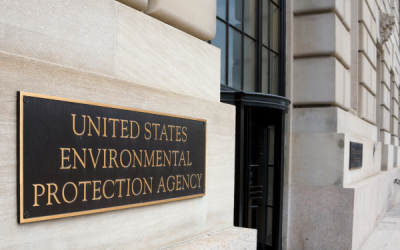Biological fertilizer usage among row-crop farmers is growing.
A new study showed that the number of farmers adopting biological fertilizers and chemicals is trending higher.
ICYMI: Biological fertilizers are microorganisms that enhance plant growth through nitrogen fixation and phosphate solubilization. The microorganisms inhabit the rhizosphere of the plant, contributing to soil fertility.
By the numbers: The study, which surveyed row-crop farmers, found that from 2022 to 2023:
Awareness of biologicals increased from 83% to 87%
Awareness of specifically biostimulants and biofertilizers rose 14%
Adoption of biologicals rose 8% to 45%
The study revealed that most farmers who haven’t tried biologicals said they would, as long as the switch would improve their bottom line. Additionally, more bans on synthetic fertilizers is increasing the need for more options.
Researchers concluded that the adoption of biologicals is not just a fad, but a trend that could lead to a growing share in the marketplace. And farmers say they’re seeing the benefit.
Soundbite: “Farmers who apply biologicals to their corn, soybeans, and other row crops consistently told us they view these natural inputs as sustainable tools that boost yields, enhance profitability, and provide soil health benefits.” — Cam Camfield, CEO of Stratovation Group, which led the research
Breaking barriers: More needs to be done with biologicals education despite these higher adoption rates. The study found that a lack of education was a major barrier to farmer adoption.
Short Corn Packs a Punch
Dynamite comes in small packages—which can be true with new seed technology. What’s...
Congress to EPA: What’s Your BEEF with Meat Packers?
The Environmental Protection Agency (EPA) is considering new regulations that take aim at meat and poultry processors.
And some members of Congress have a BEEF with the EPA’s proposals.
The proposed rules: In late January, the EPA released the details of its proposed “Clean Water Effluent Limitations Guidelines and Standards for the Meat and Poultry Products Point source category.”
Huh?
Basically, the EPA formally published its proposals to combat wastewater contaminants that come from slaughterhouses.
Okay… that makes more sense.
At the heart of the rules proposal is a concern from environmental groups about nitrogen and phosphorus pollutants that originate from slaughterhouses. In some cases, the wastewater goes directly into waterways. In other cases, the water goes to municipal wastewater treatment facilities.
But not everyone is on board with the EPA’s suggestions…
Congress responds: Last week, two U.S. representatives—Eric Burlison (MO) and Ron Estes (KS)—pushed back against the EPA and introduced the “Banning EPA’s Encroachment of Facilities (BEEF) Act.” If passed and signed by President Biden, the law would prohibit the EPA from finalizing, implementing, or enforcing the rule.
According to the lawmakers, the proposed rules place undue burden on small processors—costs that can be absorbed by larger companies.
Soundbite: “The… proposed regulation isn’t just an attack on family-run small businesses, it’s an attack on rural communities,” said Burlison. “These meat and poultry processors are the lifeblood of our communities. The BEEF Act… lets these hardworking Americans do what they do best, produce safe, affordable food for our families.”
University of Illinois Makes Big Mooves in Milk Production
Pump it up: Scientists led by Matt Wheeler at the University of Illinois Urbana-Champaign are...




